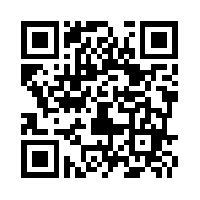Throughout the semester, I am investigating different ways we can use connected learning to mitigate the inequities students face that are rooted in resource and financial inequality. This week, I tried to focus on some different resources that can be used in and out of the classroom to minimize an inequitable division of school resources.
- I spend a huge percentage of my ‘online time’ using Twitter, so it was the first tool I thought of when discussing openly networked learning tools. I think it’s a relatively meritocratic platform, since people can share ideas and respond to others so easily with no ‘gatekeeper’. Everyone gets 140 characters. I loved the idea of a Do Now, which integrates Twitter (and other platforms) into a classroom community.
- A slightly less open network (but still very valuable) that I’ve used before is Edmodo (although Lana beat me to the punch). The way I think of Edmodo is a classroom-sized Facebook, where students can track their assignments and communicate directly with teachers. Parents are also able to use Edmodo as a tool to easily stay in the loop with their children’s teachers.
- One tool I’ve seen used in other education classes is a Flipped Classroom. A flipped classroom is one where students view a lecture as homework, and then do the more hands-on and collaborative work in the classroom, rather than at home by themselves. Using free tools like Youtube, its easy for a teacher to create a 5-10 minute video that students can then watch on their own.
- When I was an undergraduate, I took a class on the history of food in America, and every few weeks, our assignment was to update a Wikipedia page on a topic we were studying, complete with proper citation. I think using online Wiki’s as a learning tool is a great way for students to do work that reaches a larger audience (or network) outside of the classroom.
- One tool I haven’t used, but that I learned about this week was QR codes. The linked piece walks through a couple different features and extensions, like gathering data or linking to social media. If you haven’t seen or used QR codes, they are these boxes (below) that you can scan using a phone, which will complete an action associated with the code. If you want to try it out, you can get a free code scanner app and try it out. This code is linked to a world famous blog (I created the code using this site). Again this is a free tool that integrates student involvement and technology into the classroom.

- I also came across this interview that I really wanted to share. Its not explicitly connected to openly networked learning, but it is related to issues of race, education and reform, specifically focused on Teach for America and diversity. I think the “magic bullet” education reform idea was on my mind this week after reading about AltSchool (here).
- And finally, I came across this piece from the New Yorker, which takes a closer look at AltSchool, which we read about this week . Personally, I find this type of approach to schooling to be very narrow and even more limited than what the founders call “standardized” public schools. While many in the business and tech world see big data as a solution to all of life’s problems, I have a healthy skepticism of a for-profit school founded by people with no formal education background.